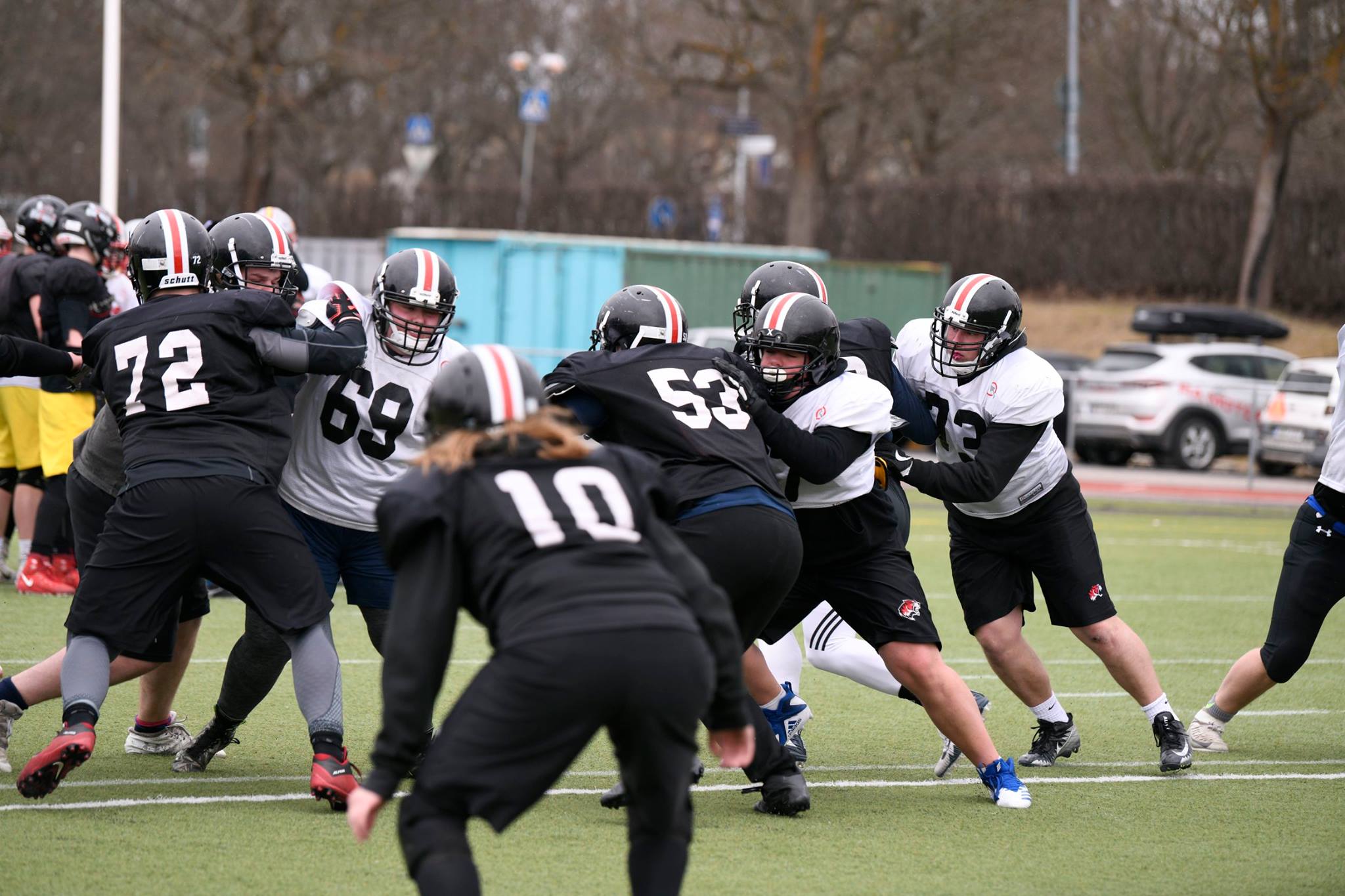Of the million-plus athletes playing high school football in the United States, the NCAA estimates that 2.7% of those players will move on to compete at the Division 1 level in college. Standing out and getting scouted off of a large varsity squad takes talent and drive, but what if it’s your dream to play D-1 football and you’re an entire continent away, coming from a country where there may be less than 1,000 high school-age players total?
Each year, thirty young athletes enroll at the RIG Academy in Uppsala, Sweden, taking those limited spots with an eye toward crossing the Atlantic to play college ball at a major university. Reaching that goal, however, requires beating the odds and getting noticed in the first place. Robert Johansson, one of the RIG’s two head coaches, recognizes how crucial it is for his athletes to develop a calling card that cuts across any time zone: a flashy 40 time.
[av_button_big label=’More football:’ description_pos=’below’ link=’manually,https://1080motion.com/training-peak-power-matt-rhea/’ link_target=” icon_select=’no’ icon=’ue800′ font=’entypo-fontello’ custom_font=’#ffffff’ color=’theme-color’ custom_bg=’#444444′ color_hover=’theme-color-subtle’ custom_bg_hover=’#444444′ av_uid=’av-154cfr9′]Beyond Top Speed—7 Keys to Peak Power with Indiana Football’s Matt Rhea[/av_button_big]
“We’ve reduced from three-tenths to half of a second off of guys’ forty times in about three months, which is ridiculous. And I don’t mean going from running a 5.5 to a 5-flat. I’m talking a 5.1 to a 4.6. We have a bunch of guys running 4.3’s and 4.4’s, which is fast. And they’re not 160 lbs, either—we’re talking 190-210 lbs. We really started figuring out how to make kids fast without doing track workouts, and that’s all due to the 1080 Sprint.”
Video 1. Football players at the RIG Academy performing resisted sprints with the 1080 Sprint. (Note: Resistance loads refer to the equivalent weight of a regular sled. An 80 kg sled is approximately 27 kg of load from the 1080 Sprint.)
Creating a Functional System
In addition to their participation in the academy—which covers both classwork and physical preparation—the athletes at RIG are also a functioning team, with games scheduled against academy teams from other European nations. With their 30 spots spread out to fill all 11 positions on the offensive and defensive side of the ball, Johansson has to find commonalities between positions to slot athletes into effective training groups.
“I’ve made a system based on the physical aspects of playing football,” Johansson says. “If I look at strength, power, speed, and endurance—and not the specific techniques for the position—I can bunch more athletes together. So, if you look at a linebacker and a running back, they’re kind of similar. They need to be good at the same things. Looking at them that way, I can create programs to help them improve what they need to be good at. On top of that, we just try to look at how can I make them stronger, how can I make them faster, how can I make them more powerful.”
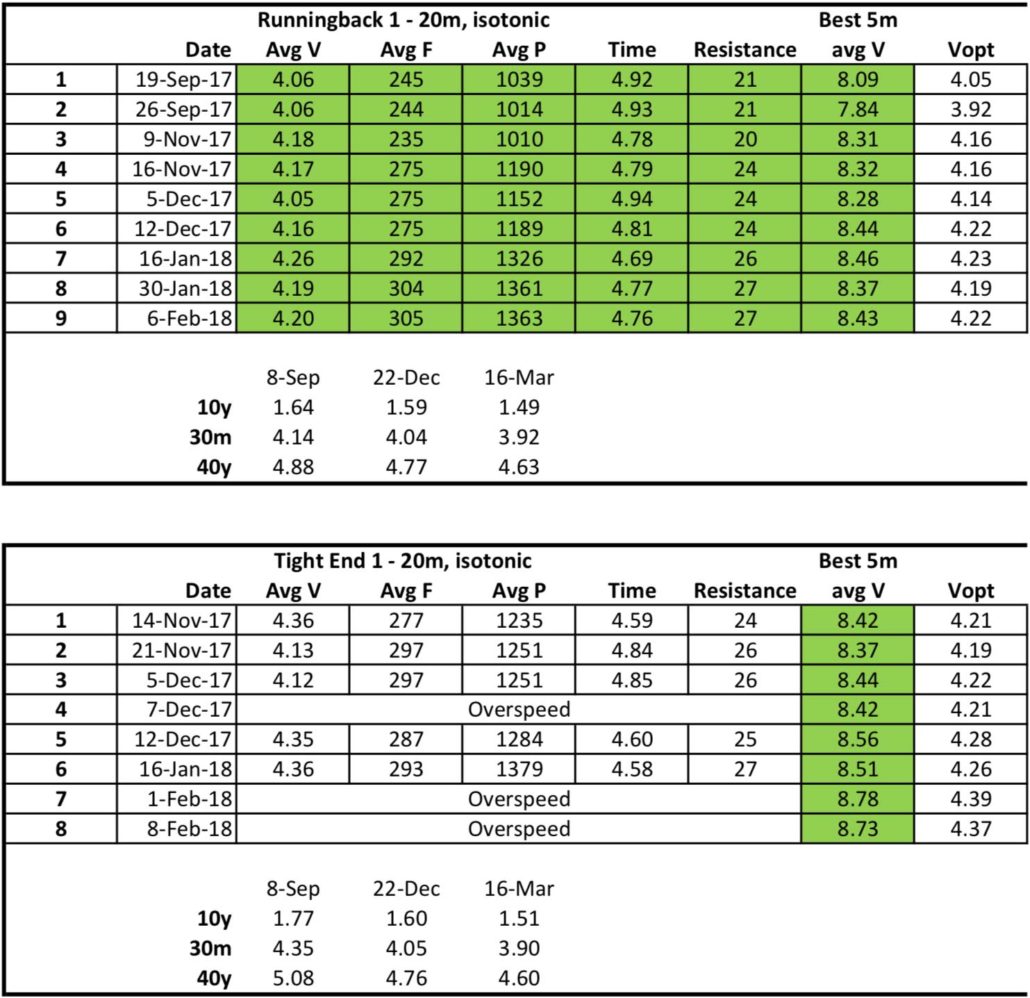
Lacking the big game experience and highlight-reel pedigrees of players in Friday Night Lights hotbeds across the USA, players at RIG need to rely on those demonstrable physical qualities to attract recruiting attention. Their efforts are paying off—despite the academy’s limited enrollment, last year they had an an athlete earn a full ride to Temple, this season they have players who’ve received scholarships at Rutgers and Towson, and several of their juniors already have preliminary offers on the table.
A forty time will draw some eyeballs, but ultimately you have to play the game, and Johansson has seen the confidence from his speed training transfer to the tactical and psychological side of the game.
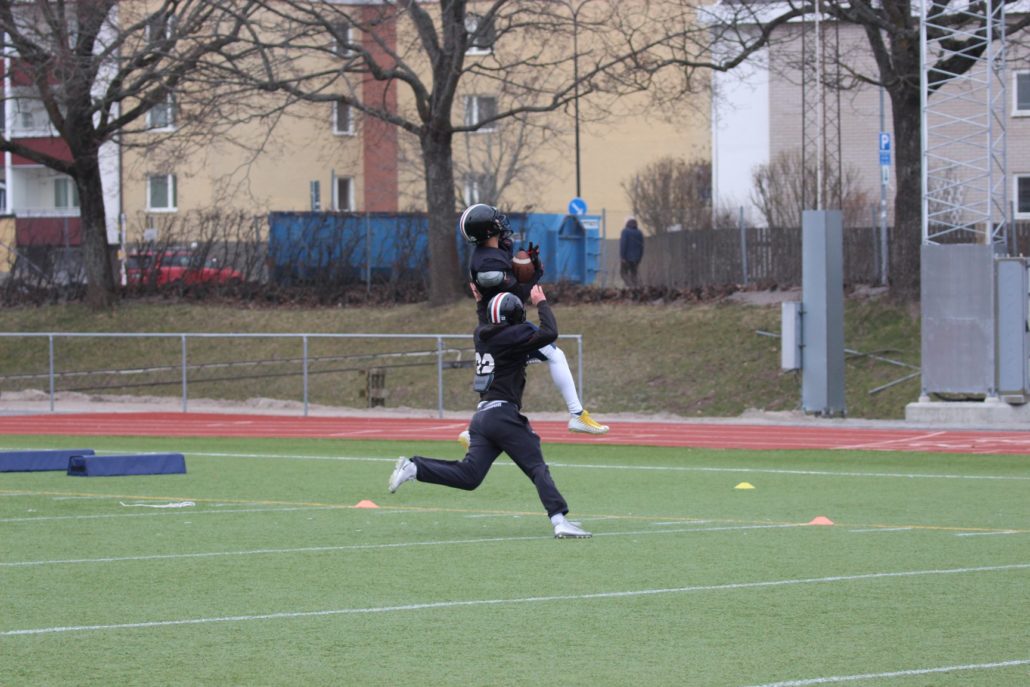
“When you have them on the field, they feel like they can run all over, [speed] is not going to be an issue,” Johansson says. “They’re thinking I have time to cover people or I can run away from somebody, because I feel a lot faster. The game slows down, they have a lot more time, just by getting faster. And since we’re not talking track speed, we’re talking power speed, they can also accelerate, they can slow down, they can be shifty. It’s power. They know how to produce power horizontally. So it doesn’t matter if I’m going for a block, or if I’m running a fade for a touchdown, it’s still power—the 1080 is teaching them power.”
All Force Is Not Created Equal
“During an unloaded sprint, you reach max power within 1 second. By adding resistance we’re taking the environment and spreading it out a little bit more—giving them a little more exposure to that maximum power environment.” — Cameron Josse
“One thing we do is we perform our force-velocity profiling on them horizontally,” Johansson says. “Most of the power work everyone does is vertical and it’s in the gym. You’re doing squats and squat jumps and Olympic lifting… well, that’s vertical. Football is played horizontally. And if we can teach them how to produce power that way, they can use it during change of direction or getting to a block or just running away from somebody.”
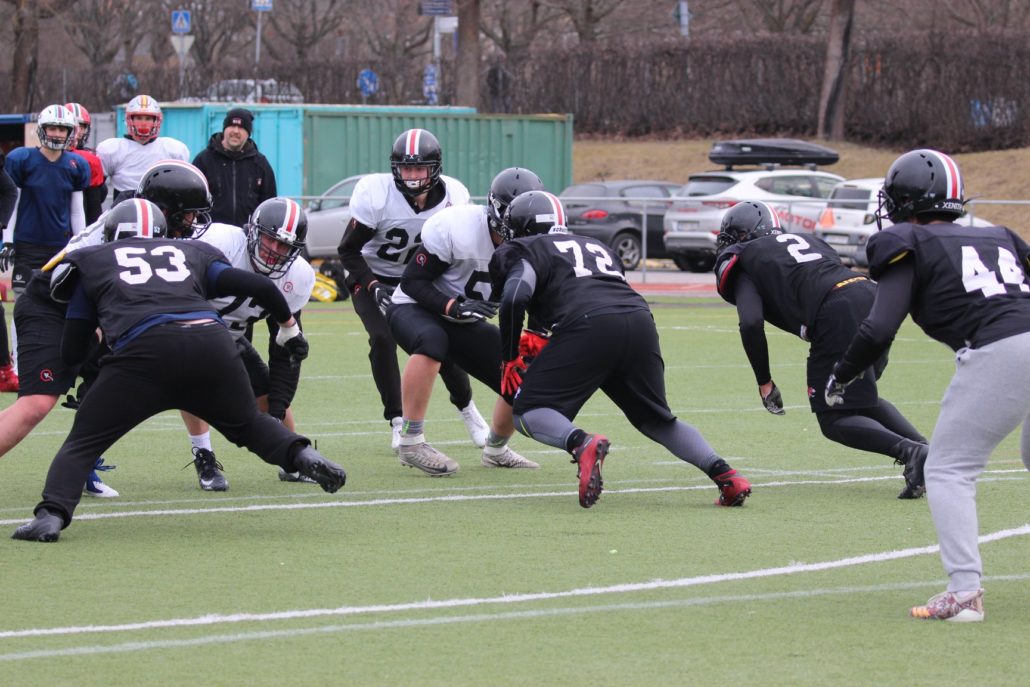
Johansson sites a pair of go-to sources for speed in football, Cameron Josse (Director of Sports Performance for DeFranco’s Training Systems) and Texas Tech Director of Speed and Power Development, Scott Salwasser. Writing for Just Fly Sports Performance, Salwasser noted “Often I will find that athletes have respectable Force and Force/Bodyweight ratio values compared to peers but struggle to direct that Force horizontally.”
Working to develop horizontal force, Johansson uses a method inspired by Josse, measuring the athlete’s top velocity with the 1080 Sprint and dividing that number in half. They then load the athletes for resisted sprints until they run at half of their max velocity, a level geared to optimize power production.
“Basically, what we did, we found a way to strength train sprinting, that’s what it is,” Johansson says. “We made them as strong as possible on each step. So if you look at a regular sprint, you’re going to have one or two steps that are going to be optimal for your power production. The other steps during a sprint, it’s going to be less. That’s something Cameron Josse said—if you can slow them down, where every step is going to be in the sweet spot, it’s going to make them so much more powerful.”
Determining the ideal match of volume and intensity for the resisted sprints required some experimentation, both in terms of distances covered as well as in the number of reps and the length of the phases. Although he observed instant results from resistance training with the 1080, Johansson also recognized that those gains in speed and horizontal force production could come at a high cost in terms of fatigue.
“What we do now is we go in three-to-four week intervals, where [the athletes] do heavy resisted sprinting and they can really hit that sweet spot, and it makes them a lot more powerful,” Johansson says. “They can feel where that power is in each step. They can recognize balance and how to use that force just by running with the 1080 machine. And with us talking after each rep, you tell them the velocity that they’re going to be—either up or down from where they need to be—and you tell them power in watts, so they get instant feedback. After every rep you can basically fix any technique issue and any power issues, and you can tell they’re starting to get tired if their technique breaks down.
“I don’t even have to coach them any more. I just tell them to run as fast as they can and push as hard as they can, and the machine with the resistance cleans up their power production.”
Converting Watts into MPH
For most athletes, a number derived from power in watts at first appears largely arbitrary—there is no initial context to assess that number as high versus low, or what quality progress should look like relative to that measure. At RIG, Johansson follows the record, rank, publish concept and turns power numbers into an understandable goal for his player’s to pursue.
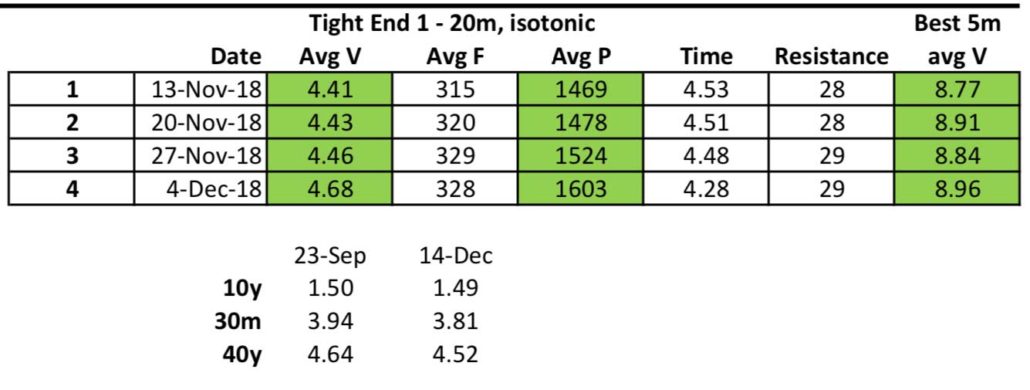
“We started to tell them their power production numbers, so they keep competing for those, everyone’s chasing the leader,” Johansson says. “If we say okay, this kid is producing 1500 watts of power, everybody is chasing 1500. So we’re not talking time, we’re not talking meters per second, we’re talking watts. The winner for that week, that guy is on top for the next, that’s the number we’ve got to chase for the next week. Which is kind of cool, because you change the culture from just running as fast as you can to chasing watts.”
[av_button_big label=’Next post:’ description_pos=’below’ link=’manually, https://1080motion.com/training-peak-power-matt-rhea/’ link_target=” icon_select=’no’ icon=’ue800′ font=’entypo-fontello’ custom_font=’#ffffff’ color=’theme-color’ custom_bg=’#444444′ color_hover=’theme-color-subtle’ custom_bg_hover=’#444444′ av_uid=’av-pu1hkj’]Beyond Top Speed—7 Keys to Peak Power with Indiana Football’s Matt Rhea[/av_button_big]
Evaluating each repetition of a sprint in training, Johansson triangulates between three inputs:
1. The athlete’s subjective feeling about the sprint
2. A subjective assessment based on his coaching eye
3. The objective data
Using those three inputs and open communication with his athletes, Johansson has seen the output in terms of results.
“The biggest thing right now is they can see the difference—when they see the numbers go up every week, they buy-in,” says Johansson. “When they can see their max velocity go up and they can see the power go up, and they see their forty time go down, then they get it.”
